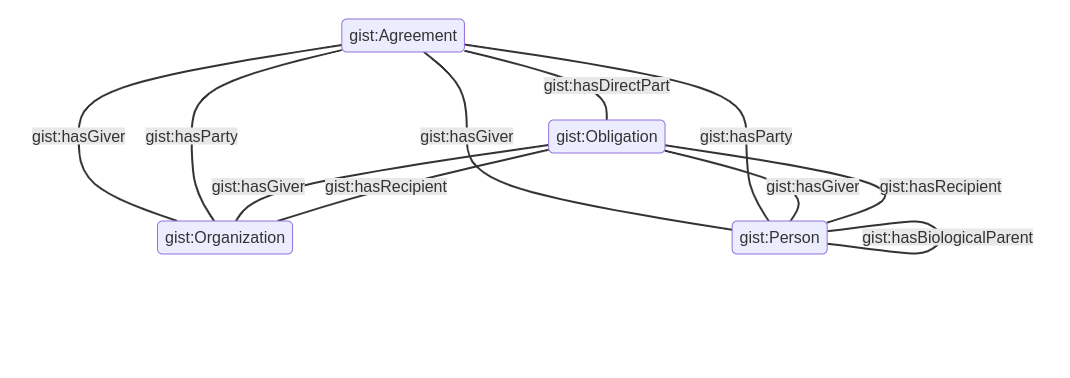This is a command line tool to take particular uris and print out a mermaid js visualization in svg.
The vis.py library takes ontology files, and an argument for a specific owl
class, and returns a string formated for mermaid visualizations.
vis.py -u <URI> <RDF.ttl>
This script takes the OWL restrictions in an ontology file and shows how a specific class relates to the rest of the ontology. For example, the gist class "Agreement" is defined like this:
gist:Agreement
a owl:Class ;
rdfs:isDefinedBy <https://ontologies.semanticarts.com/o/gistCore> ;
owl:equivalentClass [
a owl:Class ;
owl:intersectionOf (
gist:Commitment
[
a owl:Restriction ;
owl:onProperty gist:hasParty ;
owl:someValuesFrom [
a owl:Class ;
owl:unionOf (
gist:Organization
gist:Person
) ;
] ;
]
[
a owl:Restriction ;
owl:onProperty gist:hasDirectPart ;
owl:onClass gist:Obligation ;
owl:minQualifiedCardinality "2"^^xsd:nonNegativeInteger ;
]
) ;
] ;
skos:definition "Something which two or more People or Organizations mutually commit to do."^^xsd:string ;
skos:prefLabel "Agreement"^^xsd:string ;
.
When run through the script, it returns a mermaid formated version like this:
graph TB
A(gist:Agreement) --gist:hasGiver--> B(gist:Organization)
A --gist:hasGiver--> C(gist:Person)
C --gist:hasBiologicalParent--> C
A --gist:hasParty--> B
A --gist:hasParty--> C
A --gist:hasDirectPart--> D(gist:Obligation)
D --gist:hasGiver--> B
D --gist:hasGiver--> C
D --gist:hasRecipient--> B
D --gist:hasRecipient--> C
which produces the following diagram in mermaid:
